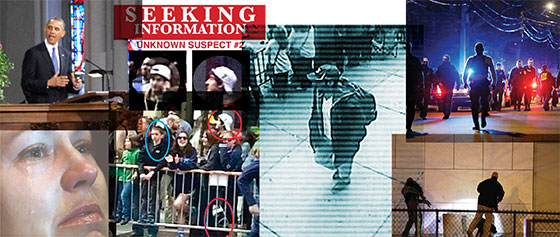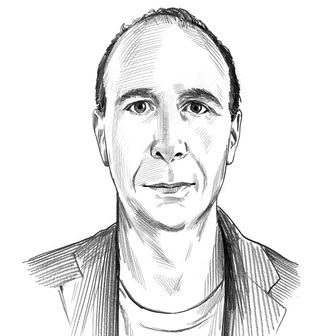
When Tamerlan Tsarnaev, the elder of two brothers fingered in the Boston Marathon attack, died after a shootout with police, the conservative pundit Ann Coulter tweeted, “It’s too bad Suspect # 1 won’t be able to be legalized by Marco Rubio, now.” It is ludicrous that Coulter’s thoughts turned immediately to immigration law, but ludicrous in a familiar way. A century ago, fears of what we now call terrorism were intimately linked with fears of immigration. Bomb attacks by radicals (at Haymarket Square in Chicago, at the Washington home of Attorney General A. Mitchell Palmer, and many other places) were terrifying events, and the radicals disproportionately drew upon immigrants from Southern and Eastern Europe, who were the explicit targets of the restrictive immigration laws that followed. The revelation of the murderer’s identity as a Muslim immigrant came to Coulter as a gratifying affirmation.
In some sense the identity of a mass murderer ought to be irrelevant. Does it make a difference if your loved one was killed by a man who thinks God will give him 72 virgins for mowing down innocent people, or by a man who believes the Jews control the government, or by a man tormented by some other psychological demon?
But the permeable line between pathological insanity and ideological insanity has taken on a sad, outsize importance in cases like this. In polarized America, both the reds and the blues have legitimate reason to fear that a tragedy will unleash an overly broad backlash. Liberals recall the false blame heaped on Muslim terrorists after Oklahoma City, and the real blame of 9/11 transforming into a fever of Bush-worship and jingoism. Conservatives recall mainstream reporters rushing to blame them, falsely, for shootings in Aurora and Tucson. It is also true that many Americans are eager, in senseless and fearful situations, for confirmation that the particular evil on display is the brand that conforms to their particular worldview. On Monday, there was comfort for some in the idea that the bombing was an act of tea-party loonies looking to exploit tax day. Among that same cohort was relief when the first pictures of the Tsarnaevs were released: The suspects were white, not Arab—maybe they were just another set of crazed teens with access to firearms. All week, nearly everyone was in a frenzy to profile, even those who should have known better.
The news media has mostly learned from its previous haste to pin murderers into ideological boxes. Mostly, but not exclusively. In sad exception to the general reticence has stood the Murdoch media, and particularly the New York Post, which seems determined to revive the old xenophobic paranoia, substituting radical Islam for anarchism, and the Middle East for Europe. Last Thursday, the Post splashed a front-page photo of two olive-skinned males under the headline BAG MEN. This was, of course, a tabloid pun of sorts. A bagman is a mob figure who collects money from victims. The deeper insinuation of criminality lay in the menacingly large luggage strapped around their shoulders. Why else would Arab-looking men be carrying a bulky bag to a six-hour-long spectator event? A smaller text box beneath the headline noted, “There is no direct evidence linking them to the crime, but authorities want to identify them.”
The “bag men” turned out to be a pair of innocent young men. One of them, Salah Eddin Barhoum, is a Moroccan-American teen who runs track and plays soccer for his high-school team and works at Subway. He and his friend had no connection to the bombing, as he established when he went to the police to clear his name.
Barhoum was not the first innocent person smeared as a potential terrorist. He was not even the first one so smeared in the Post. Three days earlier, it had breathlessly reported, “Investigators have a suspect—a Saudi-Arabian national.” The man’s suspicious behavior, other than skin, amounted to smelling of gunpowder and running away from the explosion, both of which also unfortunately tend happen to targets of bomb strikes.
The Post is hardly the only news organization rushing fragments of pseudo-fact into the public domain and then retracting them. (The Post also erroneously reported Monday that twelve people had died in the attacks.) But its recklessness displays an almost smarmy, legalistic disregard for its own swath of destruction. When the “Bag Men” scoop disintegrated, editor Col Allan replied, “We stand by our story. The image was e-mailed to law-enforcement agencies yesterday afternoon seeking information about these men, as our story reported. We did not identify them as suspects.”
Obviously, federal agents seek lots of people who were in the area of a crime. They’re interviewing witnesses. When you pluck out two of those individuals, put them on a full-page photo, slap on a headline associating the people pictured with criminal activity, and then a subhead blaring, “Feds seek these two pictured at Boston Marathon,” readers will tend to infer that they are not merely two of a long list of witnesses to a crime.Above all, thePost’s errors stand out because they are not mainly journalistic. They represent an ugly, divisive impulse. The Muslim world has certainly produced more than its share of terrorists. But there is a conceptual fallacy at the root of the nativist paranoia the Post (and other elements of the Murdoch media) have eagerly exploited: One cannot infer from the fact that many terrorists are Muslims the conclusion that many Muslims are terrorists.
This was something George W. Bush’s administration grasped immediately and to its credit after September 11, but that large chunks of his party have since forgotten. The conservative disposition toward Muslims remains an amorphous cloud of paranoia waiting to attach itself to any fragment of information that drifts into view. A Muslim cultural center in lower Manhattan? Ground-zero mosque! State Department official Huma Abedin? Possibly connected to the Muslim Brotherhood! In the frantic days following the attack, the Post represented a pinched way of looking at the country, one that gazed at Sallah Eddin Barhoum and could not see itself at all. Not in the way it intended, the Post’s reporting was exclusive.
What distinguishes terrorism from other forms of random mass homicide is that it is political. The murderer uses the tableau of public slaughter as a theater. But the lesson of the theater is whatever we choose to make of it. The suspects’ shocked and mortified uncle, pressed by camera crews, said, “I love this country—this country which gives chance to everybody to be treated as a human being.” That’s not the conclusion the terrorists, or the fearful nativists, wish us to draw, but it’s the right one.
See Also
• The Perils of Crowd-Source Nation
• In Consensual Lockdown a Good Thing?
• The Roar of Young Male Rage
• Heartache in Melting-Pot Cambridge
Have good intel? Send tips to [email protected].
